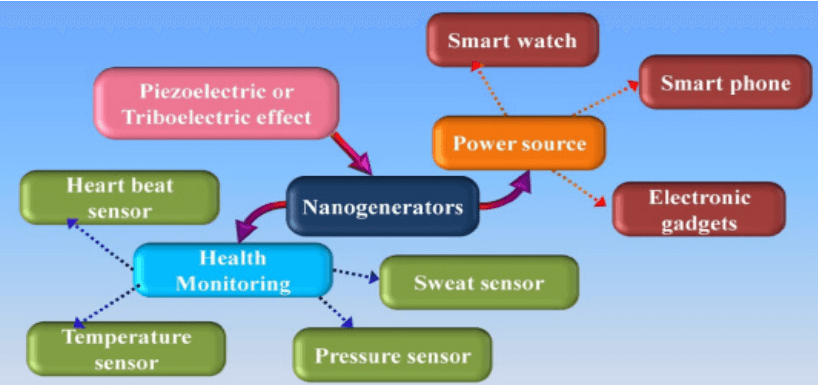The Rise of Nanogenerators
DOI:
https://doi.org/10.54162/SD01-25201/14Keywords:
NanogeneratorsAbstract
The present article discusses the recent advancements in the field of self-powered systems that harness mechanical energy from vibrations in the environment to generate electrical power. It introduces the concept of nanogenerators, which can convert mechanical energy into electrical energy through piezoelectric or triboelectric effects. These nanogenerators are lightweight, flexible, and have a high energy density, making them suitable for integration into portable electronic devices and wearables. The article also highlights their potential application as biomedical sensors for monitoring human health by capturing bio-mechanical stimuli such as heartbeat and pulse. The choice of materials and device engineering are crucial in developing flexible and wearable nanogenerators, with various materials like semiconductors, transition metal dichalcogenides, and perovskites being explored for their piezoelectric and triboelectric properties. There is a need for further research to bring these technologies into everyday life, focusing on material selection, device engineering, and signal transmission technology to advance energy harvesting and health monitoring systems.

Downloads
Published
Issue
Section
License
All articles published in Science Dialectica are licensed under a Creative Commons License. The specific license applied to an article depends on the author's agreement during submission. Our journal supports the following licensing terms:
Creative Commons Attribution (CC BY): This license allows others to distribute, remix, adapt, and build upon the work, even commercially, as long as proper credit is given to the original authors.
Creative Commons Attribution-NonCommercial (CC BY-NC): This license allows others to remix, adapt, and build upon the work for non-commercial purposes, with proper attribution.
Creative Commons Attribution-NonCommercial-NoDerivatives (CC BY-NC-ND): This license allows sharing of the work for non-commercial purposes, but it cannot be modified or used commercially.
By default, all published articles are made available under the CC BY-NC license unless otherwise specified. Authors can request alternative licensing during submission.
For more information, visit the Creative Commons licensing page or contact us at contact@sciencedialectica.com

